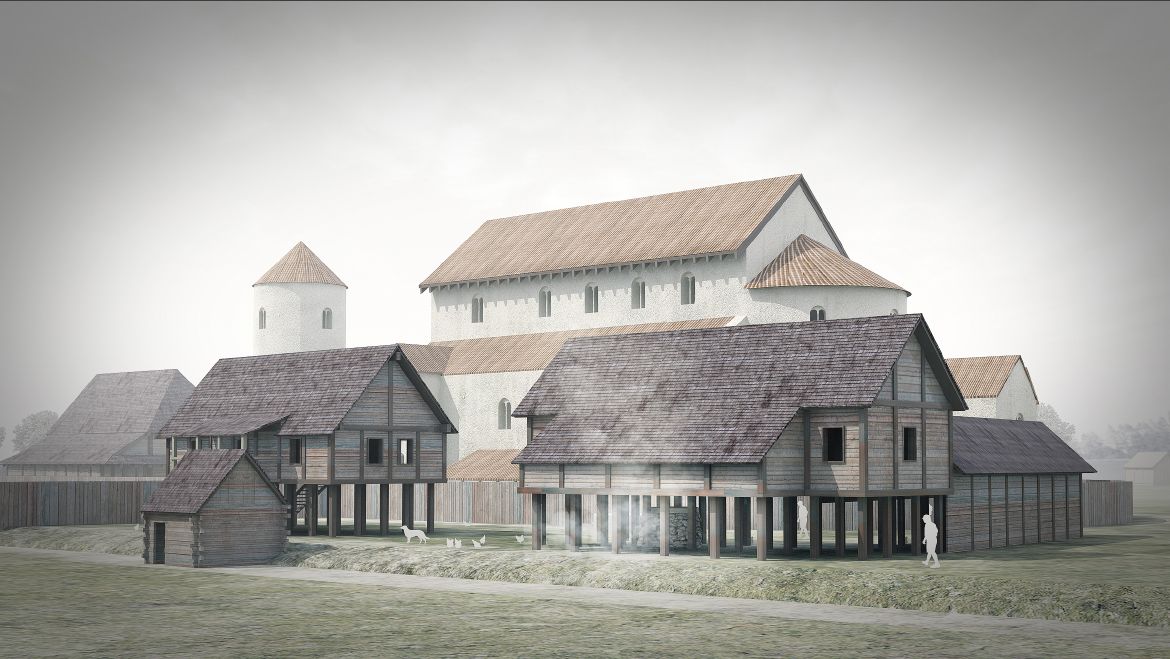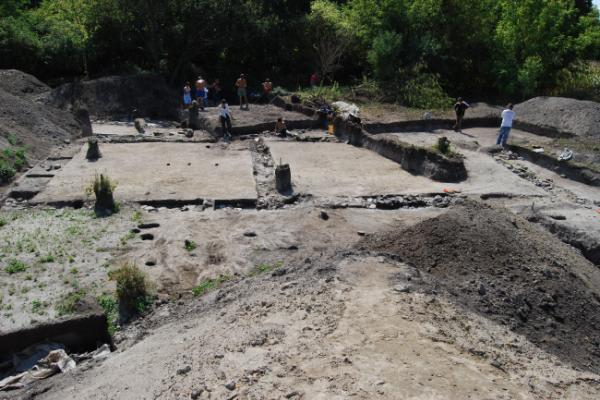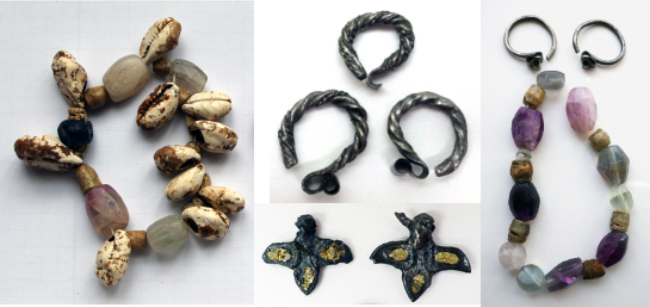With the support of the Eötvös Loránd Research Network (ELKH), the planned archaeological excavations in Zalavár-Vársziget that began in the 1950s to explore the Carolingian Mosaburg and the early Árpád-era county seat, or ‘Colon civitas’, are set to continue.
Since 1994, research into these important monuments of the Carolingian and Árpád eras has been carried out under the leadership of Miklós Szőke, scientific adviser to the Institute of Archeology of the ELKH Research Centre for the Humanities (RCH), and Ágnes Ritoók, an archaeologist at the Hungarian National Museum. In the research phase between 2022 and 2025, the remains of the monastery founded by Stephen I of Hungary will be excavated, and a series of volumes presenting the results of previous studies will also be published.
 Hadrian pilgrimage church and wooden palaces (theoretical reconstruction: Narmer Architect Studio)
Hadrian pilgrimage church and wooden palaces (theoretical reconstruction: Narmer Architect Studio)
From the beginning of the 840s AD, Mosaburg, otherwise known as Mocsárvár, was the Pannonian center of a Christian settlement controlled by the Archdiocese of Salzburg, the ‘capital’ of the easternmost province of the Carolingian Empire, Pannonia. The town served as the Pannonian seat (regia civitas) of the county belonging to Count Pribina and his son, Kocel (Priwina and Chezil in contemporary sources) and then, from the late 880s, the Pannonian kingdom of the East Frankish King Arnulf.
In the late 860s, a pair of missionary monks, Saint Cyril and Saint Methodius, were active in Mosaburg. A short but significant period began in the history of the settlement when, in 869, it became the seat of Methodius, who was appointed by the Pope as the Archbishop of Pannonia. These antecedents all contributed to the fact that in 1019, Stephen I of Hungary founded one of the earliest Benedictine monasteries there in honor of Saint Adorjan. The abbey – which also served as a notary (loca credibilia) in the Middle Ages – was transformed into a border fortress during the Ottoman period. Later, at the end of the Turkish wars, in 1702, it was blown up under orders from Leopold I.
 The foundation walls of the palace of King Arnulf
The foundation walls of the palace of King Arnulf
The planned archaeological research of Zalavár-Vársziget began 70 years ago under the leadership of Géza Fehér (1952–1954), then Ágnes Cs. Sós (1963–1992). From 1994, the explorations have continued under Miklós Szőke Béla (RCH Institute of Archaeology) and Ágnes Ritoók (Hungarian National Museum). As a result, researchers now have a much larger amount of Carolingian and Árpádian monuments and archaeological finds at their disposal.
 Finds from the cemetery of the Árpád-era Ispán center
Finds from the cemetery of the Árpád-era Ispán center
The participants of the project, which will be implemented between 2022 and 2025 with the support of ELKH, have set two main objectives. First, excavations are planned to find out what is left of the monastery founded by Stephen I of Hungary and the representative buildings of the manor houses of Pribina, his son, Kocel and King Arnulf, while they also plan to publish the results of earlier excavations in a series of articles.
The first volume of the series – which has already been published – is a summary publication that presents the history and archeological and architectural monuments of the Carolingian province of Pannonia embedded in a European context. The following volumes will include the Zalavár-Rezes site of the Mosaburg suburbium (Carolingian servant settlement and cemetery), the church on the castle island of the early Árpád-era county seat (Colon civitas), and the multilayered cemetery that envelops it and that was used until the beginning of the 13th century. Also on display are the thousands of tombs around the Carolingian Church of Mary and the Pilgrimage Church of Hadrian, used from the middle of the 9th century to the end of the 11th century, as well as the Carolingian churches on Zalavár-Vársziget and the surrounding islands, and the results obtained during an examination of groups of finds related to the liturgy.
 Summary floor plan of the Mosaburg area (blue wall of the Árpád-era monastery)
Summary floor plan of the Mosaburg area (blue wall of the Árpád-era monastery)
Extensive scientific research is being carried out on the archaeological site of Mosaburg for the modern communication of the finds. These include material (XRF, NAA) and manufacturing technology (SEM), anthropological, archaeozoological, archaeobotanical, archaeogenetic and isotope and radiocarbon studies, the basic data of which are also incorporated in the relevant sections of the publications, while the results are summarized in a separate study volume.
 Foundation trench for the perimeter of the monastery (late 11th century)
Foundation trench for the perimeter of the monastery (late 11th century)
Archaeological excavations of the remains of the Benedictine monastery founded by St. Stephen, and of the Carolingian count-royal residence began at the end of May 2022 and are scheduled to continue until mid-August.


